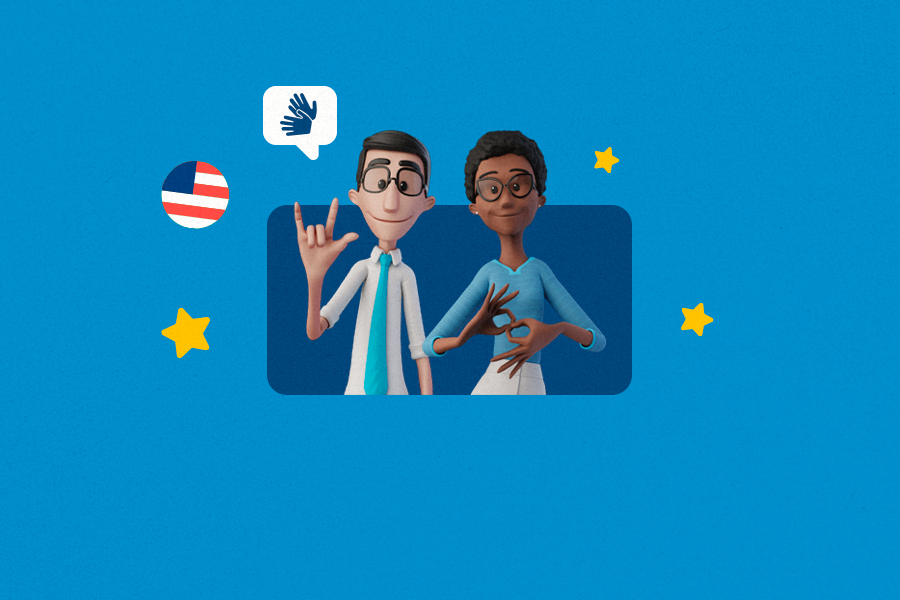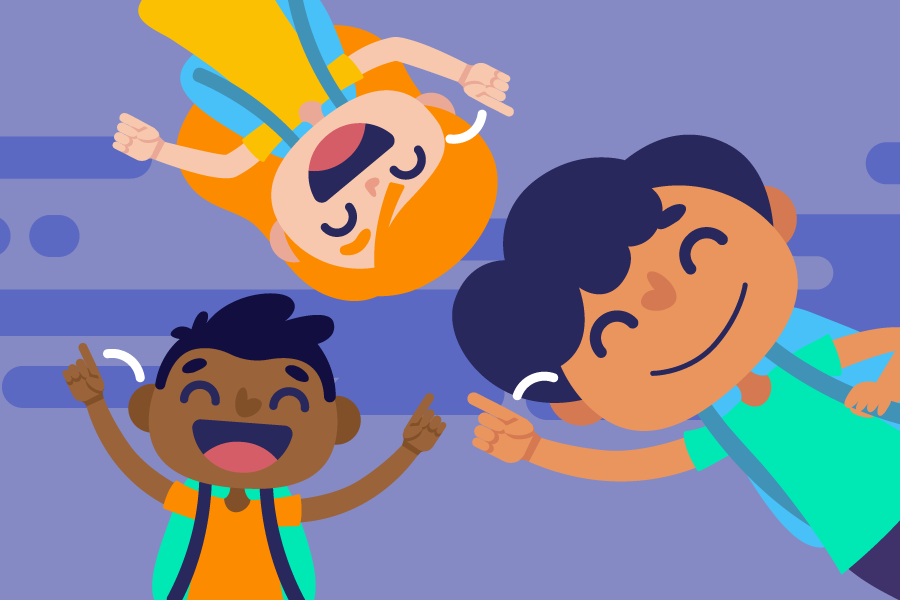
How To Learn Sign Language And How Long Does It Take?

If you are interested in learning Sign Language, you are at the right place! We are not going to lie, learning a different language is always a challenge, but is a very nice initiative, because it opens the doors for another culture and community.
We are here to encourage you to practice American Sign Language (ASL) and start communicating with deaf and hard-of-hearing people. So, pay attention to these tips to get you started!
1. Take Sign Language Classes
Taking Sign Language Classes is a good option to start this journey. It is always easy to have someone holding your hand and walking you through the first steps. Classes are also a good way to meet new people with the same purpose as you, which is an opportunity to practice more often.
Community colleges usually offer those lessons. You can also search it online or even look for your local education authority.
2. Use ASL apps
You can learn ASL with the convenience of an app. Yes! There are already apps that can teach you in a very didactic way. Our favorite one is of course the Hand Talk App, which works as a pocket dictionary and translates all words and sentences from English into American Sign Language, and from Portuguese into Libras (Brazilian Sign Language).
Every time you do not remember a sign, you can look it up. In addition, if you want to have a conversation with someone in ASL, you can use it to help you out. It is a great way to study and practice new signs.
The Hand Talk App is pure technology! Just like Google Translator, it uses artificial intelligence to identify the words and translate them. With the help of the friendly virtual translators Hugo and Maya, the app is already contributing to a more inclusive world and it has been awarded by the UN (United Nations) as the best social app in the world!
You can download it for free in your app store and learn from wherever you are!
3. Take online lessons
Online lessons are very practical. Usually they have very flexible hours, so you can easily organize your schedule. In addition, as they do not need to pay renting expenses, they could be more affordable than when in the classroom. It also has the benefit that you can take them from wherever you are going on a trip, it is not an excuse to miss out.
It is not hard to find ASL online courses. Universities, such as Gallaudet, offer very good ones for free. You can also look for other deaf organizations that may have some more options available, it is worth the search!
4. Learn watching videos
The online content is growing day by day. We are living in the era of knowledge, never before it was so easy to learn something new. Almost everything you want to know is one click away, and Sign Language is not different.
Nowadays, there are plenty of content producers teaching Sign Language in social media. The best part is that you can watch it in the comfort of your home and for free.
Here are some YouTube Channels that can help you out:
- Bill Vicars;
- Learn How to Sign;
- TakeLessons
- Chris Georges;
- Chrissy Marshalll, among others.
5. Join a Sign Language group
Learning a new language is learning a new culture, and the best way to do that is to get involved with people from this community. Who better for you to practice American Sign Language with than some native signer? Or with someone who is also trying to learn and improve it? That’s why joining a Sign Language Group is a smart option.
If you do not know any of them and also don’t know where to look for it, a good tip is to visit a meetup website and search for the kind of community you want to join.
6. Get a Sign Language tutor
If you want to improve your Sign Language skills faster, hiring a tutor is probably the fastest way to do it. Search for a good professional near you, or even online, and start practicing as soon as possible.
7. Watch the interpreters
If you are interested in learning Sign Language, the more you watch other people communicating with it, the more you will learn. So, watching Sign Language Interpreters and trying to follow their moves and associate it with the words you are hearing, is a nice way to practice it.
8. Ask deaf people from your circle to teach you
If you already know people from the deaf community that communicate in ASL, don’t waste more time! Ask them to teach you and practice with you. Besides improving your Sign Language skills, they will also be happy to see that you are really interested in learning their language to communicate with them and with other people from the community. It is a great way of showing your commitment.
9. Read books
Although ASL is a visual language, there are books that teach some signs and hand configurations. There are also Sign Languages dictionaries, books for children to learn it in a ludic way and much more!
Learning Sign Language by reading books is not the easiest way, as the hand configurations are static on the page and the movements are not really obvious, but it is a good alternative if you are not a fan of online learning!
10. Follow ASL influencers on social media
It is impossible to deny that we are completely involved with social media nowadays. We use it to be aware of what is happening around us and to communicate with loved ones. If you are like most people, you are connected to it a great part of your day.
So, if you are spending a lot of time online, why not fill your digital environment with useful stuff? Follow contents that are going to teach you something new! There are plenty of digital influencers and content producers that are teaching ASL and its culture. Here are some good ones:
11. Pay attention to facial expressions
The facial expressions are a key when it comes to Sign Language! Signers use it to express the feelings and the mood of the sentence and conversation. Most Sign Language learners are ashamed of doing facial expressions, but a good tip is to let go of the shame and practice the expressions from the beginning!
12. Practice fingerspelling
Fingerspelling is the easiest part of Sign Language. It is really simple to memorize the letters of the alphabet and everytime you forget a sign, you can spell the word and even ask how to sign it.
Frequently asked questions
What are the types of Sign Language?
Many people still think that American Sign Language is universal, but this is not true! Most countries have their own Sign Language. This is due to the fact that each country has its own culture and speaks different languages, which also influences their deaf community and its language.
In fact, there are between 138 and 300 different Sign Languages around the globe!
For exemple:
- French Sign Language (FSL): it is one of the oldest Sign Languages and its grammar influenced other Sign Languages such as ASL, ISL (Irish Sign Language), Libras (Brazilian Sign Language), RSL (Russian Sign Language), and more!
- Brazilian Sign Language (Libras): it has been recognized by the government since 2002 and is used by more than 3 million brazilians.
- British Sign Language (BSL): even though England and America speak the same language (English), the cultural factors have a bigger impact on the Sign Language of the countries and they are far from being the same. But, the BSL has spread to other countries, such as Australia and New Zealand, for example.
And many others!
What is the first step to learning Sign Language?
The first step for learning a new language is to make sure you are committed to it. Learning something new requires dedication and patience. Looking for tutorials of basic signs is a good way to start. Also, you can rely on the free Hand Talk App to learn words and sentences, just like a pocket dictionary!
Is Sign Language hard to learn?
The answer to this question is no! If you follow these tips you will learn ASL quicker than you think! If you want to make it easier for yourself, go after lessons and rely on other people’s help to practice and improve your skills! Try to practice a little everyday, surround yourself with content about it, watch interpreters and deaf people signing. And count on Hugo’s Blog to keep learning more tips, tricks and content about the deaf community.
How Long Does It Usually Take To Learn Sign Language?
This is relative. It depends mostly on you. There is no recipe and magical tricks to learn a new language from the beginning. It depends on how much time you have available for studying it per day or week, it also depends on your ability to absorb new information and many other matters. It could take 10 months, or 5 years. The quicker you want this process to be, the more committed you must be with your practices.
How to Learn Sign Language for free?
Throughout this content, we gave many tips on how to learn Sign Language in a free and easy way. You can start by watching videos on YouTube, follow ASL influencer and content producers on social media, download online books about Sign Language and hand configuration, look for groups of signers and practice with other people, download the Hand Talk App and use it to learn new sentences, look for free online courses, such as the Gallaudet one to help you on this journey, and make friends with deaf people and ask them to help you out (they will be happy to see that you are interested on their language and culture).
What are the best apps to learn Sign Language?
The best app to learn Sign Language is the Hand Talk App because it works just like Google Translator and you can learn most of the words from the dictionary! So open your app store and download it now for free!
There are also other apps that are pretty good, such as:
Conclusion
If you want to learn Sign Language, you must be committed to studying and practicing to learn it quickly. There are plenty of ways to do it for free!
The deaf community is very friendly and they love when hearing people are interested in learning their language to better communicate with them and also be inclusive! So make friends and try to learn from them!
We hope you have enjoyed this content and we will see you on the next ones!



